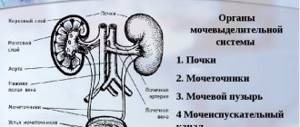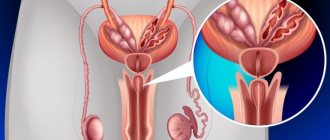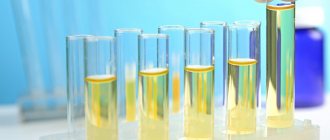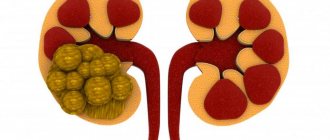What is aldosterone?
Aldosterone is a hormone produced by the adrenal glands. It belongs to a group of hormones called mineralocorticoids. Aldosterone helps the body retain sodium and water and release potassium, which leads to increased blood pressure.
ALDOSTERONE IS PRODUCED IN THE ADRENAL GLANDS
Aldosterone has its own daily rhythm of production (circadian rhythm): its level increases at the end of sleep in the early morning, but before the values of another hormone, cortisol, begin to increase. (R)
Aldosterone works in opposition to atrial natriuretic peptide (ANP) produced by cardiomyocytes, cells in the heart that are involved in the regulation of water-electrolyte metabolism and fat tissue metabolism. The ANP hormone reduces the amount of water and sodium in the blood.
Aldosterone is also associated with 2 other hormones: renin and angiotensin, which create the renin-angiotensin-aldosterone system (RAAS). This system is activated when the body has decreased blood flow to the kidneys, as a result of decreased blood pressure, or a significant decrease in blood flow during bleeding or severe injury to the body.
RENIN – ANGIOTENSIN – ALDOSTERONE SYSTEM
Renin is responsible for the production of angiotensin, which further stimulates the production of aldosterone. As soon as the amount of fluid and sodium in the body decreases, the level of renin decreases, and the amount of aldosterone produced increases, which retains fluid and sodium in the blood.
Increasing potassium levels in the blood signal the body to increase aldosterone production.
If the level of the hormone aldosterone in the body becomes too low or too high, then this condition can lead to the development of diseases. Therefore, it is very important that the values of this hormone remain at normal healthy levels.
Conn's syndrome as a consequence of increased aldosterone levels
Cohn syndrome is also called primary hyperaldosteronism. This disease is quite rare. Its development is due to the presence of an adenoma that produces aldosterone.
This disease can be detected by the following signs:
- a large amount of sodium is retained in the body;
- excessive excretion of potassium in the urine;
- in most cases, the concentration of aldosterone in the blood is overestimated;
- a sharp decrease in renin.
With this syndrome, a certain form of hypertension is diagnosed, in which the level of renin is opposite to the level of aldosterone in the blood.
Indications
A blood test is performed to determine the level of the hormone aldosterone if the following indications are present:
- reduced amount of potassium;
- increased blood pressure;
- orthostatic hypotension (this condition is manifested by dizziness with a sudden change in posture);
- if you suspect insufficient adrenal function.
Advice! A referral for analysis can be given either by a general practitioner or by specialists such as a nephrologist, endocrinologist or oncologist.
Norms and deviations from norms
When performing a blood test, the normal aldosterone content for adult patients is presented in the range of 30-355 pg/ml. For children, the norm is significantly higher and depends on age:
- 0-1 month – from 300 to 1900 pg/ml;
- 1 -24 months – from 20 to 1100 pg/ml;
- 3 years and older – from 12 to 340 pg/ml.
What does low hormone levels indicate?
Too low levels of aldosterone in the blood plasma are typical for the following conditions:
- Addison's disease is a serious disease manifested by insufficiency of the adrenal glands;
- renal failure of various nature;
- congenital adrenogenital syndrome is a pathology characterized by a tumor of the adrenal glands;
- acute poisoning, including alcoholic;
- other conditions characterized by dehydration.
Advice! Low levels of the hormone are also observed during the recovery period in patients who have undergone resection of an adrenal tumor.
What does exceeding the norm mean?
Aldosterone is produced in large quantities during hyperaldosteronism, which can be primary or secondary.
- Conn's syndrome or primary hyperaldosteronism develops when an adrenal tumor forms. This condition is manifested by an imbalance of electrolytes.
- The secondary form of the disease develops as a result of kidney pathologies, liver cirrhosis, and heart failure.
A blood test for aldosterone is an important diagnostic test that can detect the presence of serious diseases. Since hormone levels depend on a variety of factors, careful preparation for blood sampling is necessary to obtain correct results.
Hormone functions
There are so-called target organs of this hormone:
- Kidneys.
- Vessels.
- Brain.
Aldosterone (we explained what it is) affects the quantitative and qualitative composition of urine. As mentioned above, the hormone promotes the retention of sodium ions, while potassium, on the contrary, is removed from the body, reducing its concentration.
It affects vascular elements through receptors, leading to an increase in the tone of the smooth muscle component of the vascular wall as a result of blood pressure in the peripheral parts of the bloodstream.
It has an effect on brain cells. Aldosterone causes a jump in blood pressure by activating the central nervous system on the vital vascular-motor center.
Sodium retention occurs not only in the kidney elements, but also in the cells of the gastrointestinal tract. In the glandular formations of the skin, on the contrary, its concentration decreases due to changes in the qualitative composition of sweat.
The effect of this mineralcorticoid is:
- An increase in the level of sodium ions in the blood plasma.
- Reducing the concentration of potassium ions.
- Increased blood pressure levels.
In addition, the hormone aldosterone activates the synthesis of collagen fibers, which is especially noticeable during ischemia of the heart muscle or during manifestations of arterial hypertension. Thus, it takes part in the formation of the connective tissue framework of the vascular system and the entire human body.
How is mineralocorticoid produced?
Hormone synthesis has quite complex regulatory mechanisms. There is no specific tropic signaling substance for aldosterone in the central part of the endocrine system (pituitary gland).
The hormone is released under the influence of a special renin-angiotensin system in the body. This regulatory system maintains blood circulation and the water-salt composition of the plasma.
The activity of the renin-angiotensin system increases:
- when blood pressure drops in the vessels of the kidneys;
- with a decrease in the concentration of salts in the blood;
- when the tone of the sympathetic department of the autonomic system increases (for example, during emotional stress).
Components of the renin-angiotensin system are produced in the kidneys, brain, ovaries, adipose tissue, heart, and blood vessels.
Normal Aldosterone Levels
| Age | Indicators, pg/ml |
| Newborns | 50 – 1790 |
| Infants 1-12 months | 70 – 990 |
| Children 1-3 years old | 70 – 930 |
| Children 3-11 years old | 40 – 440 |
| Children 11-15 years old | 40 – 310 |
| Adults (over 15 years): standing | 25 – 392 |
| Adults (over 15 years): lying down | 18 – 230 |
Pubertal form
The presence of a pubertal form of adrenogenital syndrome is indicated by the following features. An increase in the amount of 17-KS excreted in the urine with a normal level of 17-OCS. This means that the reserves of glucocorticoid function have not yet been completely depleted.
In differential diagnosis, it is necessary to take into account the results of the large and small tests of suppression of the adrenal cortex by glucocorticoids. Dexamethasone is usually used in these tests because it demonstrates whether there is a decrease in the amount of ACHT produced. After taking this drug, there is a rapid decrease in the release of elements such as:
- 17-KS,
- androsterone,
- pregnanediol,
- dehydroepiandrosterone.
Androgenization in this form of the syndrome cannot always be associated with the excretion of 17-CS.
It is also affected by the level of testosterone, progesterone, etc. Therefore, to confirm this diagnosis, you will need to determine the amounts of testosterone in the blood and pregnanetriol and pregnanediol in the urine. The amount of ACHT is determined using radioimmunoassay methods.
Increased amounts of physiologically inactive forms of estrogen may be found in urine.
There is no point in performing pneumopelviography for patients with suspected such a diagnosis, since no changes will be detected. The early stages of the pubertal form of adrenogenital syndrome are not characterized by serious changes in the adrenal glands, so nothing new will be revealed during such a study.
Postpubertal form
This type of adrenogenital syndrome is characterized by a normal amount of 17-KS secreted (or a slight excess of aldosterone in the blood). Carrying out tests with ACHT may show a decrease in the reserve capacity of the adrenal cortex.
Using a dexamethasone test, you can determine where the production of excess androgens occurs.
There are practically no changes in the uterus, ovaries and adrenal glands, so X-ray examination of these organs is of little information value.
Congenital form
Congenital adrenogenital syndrome is quite easy to detect by comparing the quantitative indicators of hormones with normal values.
The amount of 17-CS excreted in urine in patients with this diagnosis is 140 µmol/day (in healthy people its value is about 38 µmol, which is almost 4 times lower).
The DHEA value in congenital adrenogenital syndrome is 22 µmol, and in healthy people it is 3 µmol/day. Testosterone levels are also increased.
When exposed to Dexamethasone in such patients, a drop in the amount of 17-CS is detected.
The congenital form of adrenogenital syndrome can be assumed already during the examination. Typically, children with this disease have an uncertain structure of the external genitalia, which makes it difficult to determine their gender. Having discovered this feature, doctors prescribe hormonal tests and begin treatment.
Reasons for the increase
When there is an excess level of aldosterone in the blood or urine, a disease such as hyperaldosteronism begins to develop. This pathological disease is divided into two types: primary and secondary. Primary hyperaldosteronism is provoked by an adenoma of the adrenal cortex. As a result of this disorder, the hormone increases in the body, which leads to diffuse cell hypertrophy.
The main reasons why aldosterone is elevated include the following factors:
- The main cause of elevated hormone levels is primary hyperaldosteronism, which occurs in 70% of all possible causes. Primary hyperaldosteronism is also called Conn's syndrome. The disease is a benign neoplasm in the adrenal cortex, resulting in increased hormone production.
- Ideopathic hyperaldosteronism. This type of disease occurs in 30% of cases, and manifests itself in the form of damage to organs on both sides in the form of hyperplasia or cell proliferation.
- The cause of increased hormone levels may be high blood pressure, as well as heart failure.
- Elevated aldosterone can occur due to the development of liver cirrhosis, as well as kidney disease, mainly in women.
- When using hormonal drugs.
Aldosterone often increases in women during the period of ovulation, as well as when carrying a child. This is a normal phenomenon, since after passing the luteal phase of ovulation, as well as after the birth of a child, the level of the hormone in the body returns to normal in both cases.
In case of secondary aldosteronism, the following factors can affect the increase in hormone levels in the body:
- toxicosis during pregnancy;
- cirrhosis of the liver;
- renal artery stenosis;
- long-term heart failure;
- a diet based on reduced sodium intake.
It is important to know! What caused the increase in hormone levels in the blood or urine can only be determined by the attending physician after carrying out appropriate diagnostic procedures. Depending on the reasons, appropriate treatment for the patient is prescribed.
How is the analysis carried out?
To carry out the study, the enzyme immunoassay method is used; venous blood is used as the material.
Preparation
The hormone aldosterone is produced unevenly, its synthesis is influenced by various factors, so preparation for the study must be done seriously. Recommended:
- 15 days before the examination, monitor the consumption of table salt, since the exclusion of this seasoning or its excessive use affects the result;
- if on the eve of taking blood samples it turns out that the patient has developed an inflammatory disease in the acute phase, it is necessary to reschedule the analysis, since the level of this hormone in patients is significantly reduced;
- High physical and emotional stress can lead to an increase in the level of hubbub, so on the eve of the study you need to avoid stress and overwork;
- 15 days before the examination, it is important to avoid taking drugs to regulate blood pressure, diuretics, as well as any hormonal drugs. 10 days before the scheduled time of sample collection, do not take medications that slow down renin synthesis. Discontinuation of medications is carried out after agreement with the doctor.
The test must be taken in the morning on an empty stomach.
Blood test: renin and aldosterone ratio, normal
The content of aldosterone alone is not always the required indicator. Sometimes its relationship with the level of renin in the body is required. It is also taken from blood plasma. Such an analysis can be useful when diagnosing adrenal adenoma, glucocorticoid imbalance, and adrenal hyperplasia. Analysis of the aldosterone renin ratio, or as it is also abbreviated as AGS, normally the aldosterone renin ratio has the following normal values - from 3.8 to 7.7 units.
To treat adrenal disorders, enzymes produced by the kidneys are normalized, then renin is increased and aldosterone levels are reduced.
The principle of preparation and delivery of the analysis does not differ from what is carried out during the usual determination of aldosterone. This technique is not accepted by all specialists, since despite the additional indicator, the information may turn out to be false due to low renin levels. In this case, aldosterone will be shown as high, although it is normal, and renin is too low. It is for this reason that ARS is rarely used as the main analysis and is done as a supplement, which is very convenient when several analyzes are taken at the same time.
Hormone norm
Normally, the concentration of mineralocorticoid in the blood is constantly changing. But usually in adults its content is 4–15 ng/dL (100–400 pmol/L). In children of the first year of life this figure is significantly higher. In newborns, aldosterone ranges from 38 to 200 ng/dl (1060–5480 pmol/l), in infants up to six months – from 18 to 160 ng/dl (500–4450 pmol/l).
Reference values may vary slightly between laboratories.
To correctly take a mineralocorticoid test you need to:
- use table salt in food at least 15-30 days before the study;
- discontinue diuretics, antihypertensives, steroids, estrogens (if possible) 15-30 days before the test;
- do not eat products with licorice for at least 15 days before the test.
Elevated hormone aldosterone
Various diseases, as well as problems with the hormone-producing gland, can cause aldosterone levels to begin to exceed normal. This affects other areas of the body. If aldosterone in the blood is higher than normal, then it is not advisable to maintain this condition for a long time and it is better to start treatment as soon as possible so that the consequences do not become too serious. The hormone is produced in the adrenal glands and if the norm is exceeded, specialists make a diagnosis of hyperaldosteronism.
Causes of elevated aldosterone levels
- Psychological stress and anxiety. When a person gets into a state of stress, his nervous system is activated and a sharp release of aldosterone occurs. Adrenocorticotropic hormone (ACTH) is part of the mechanism by which the nervous system increases aldosterone levels.
- Increased production of cholecystokinin (CCK), a peptide hormone of the gastrointestinal tract, which leads to an increase in aldosterone levels. Patients with irritable bowel syndrome are known to produce too much of the hormone CCK in response to foods rich in fat. Also, when eating foods with lectin, there is an increase in the production of CCK (in experiments on rats. In a study on humans, the inclusion of beans in the diet also led to an increase in the production of CCK, which is likely due to the presence of lectins.
- Magnesium deficiency.
- Lack of zinc.
- Low blood pressure. If you have low blood pressure, the body tries to compensate for this decrease by producing more aldosterone.
- Getting a lot of potassium from food or increased potassium levels due to kidney disease.
- Increased blood acidity (acidosis).
- High histamine levels. This mediator of allergic diseases greatly stimulates the production of aldosterone (in experiments on dogs).
- The presence of a tumor that produces aldosterone.
- Adrenal adenoma secreting aldosterone is the most common cause.
- Adrenal hyperplasia.
- Heart failure.
- Taking or injecting estrogen, angiotensin.
- Heavy bleeding.
- Liver cirrhosis with ascites.
- High doses of diuretics and laxatives.
- Nephrotic syndrome.
- Pregnancy.
- Thermal stress.
- Fasting for more than 10 days.
- Chronic obstructive pulmonary disease.
Symptoms of increased aldosterone
An increase in aldosterone levels is manifested by the following symptoms:
- tachycardia or arrhythmia;
- headache;
- severe spasm of the larynx;
- prolonged numbness of the arms and legs;
- general fatigue
- low blood pressure;
- increased thirst and increased volume of urine excreted;
- swelling;
- muscle weakness;
- convulsions;
- metabolic alkalosis;
- paresthesias;
- sudden weight loss;
- disruptions in the gastrointestinal tract;
- skin hyperpigmentation;
- dizziness.
To accurately establish what causes such symptoms, a more detailed diagnosis is carried out. In the process of carrying out diagnostic measures, it is important to accurately determine the balance of renin and aldosterone in the blood. With primary hyperaldosteronism it will be like this: an increase in hormone levels and a decrease in the enzyme renin.
How is an increase in this hormone diagnosed?
There are several methods that help detect increased aldosterone. This is done through laboratory tests, some of which require special equipment. The main methods for diagnosing elevated levels are:
- A blood test for hormones, which takes into account the presence of sodium and potassium in the body, as well as the content of aldosterone itself;
- Scintography;
- Computed tomography - used to identify various pathologies and tumors that can affect the production of the hormone;
- Magnetic resonance imaging - used for almost the same purposes as computed tomography;
- Hormonal urine analysis, since aldosterone is found not only in the blood, but also in the urine;
- Biochemical analysis of urine and blood.
Diseases associated with high aldosterone levels
As aldosterone levels increase, the risks of developing the following diseases increase:
- Autoimmune diseases. An increase in aldosterone increases the number of immune cells of the Th17 phenotype, which are associated with the development of an autoimmune reaction.
- High blood pressure.
- Cardiovascular disease , including congestive heart failure, coronary heart disease, and stroke.
- Chronic kidney disease.
- Osteoporosis.
- Conn's syndrome is primary hyperaldosteronism. Symptoms: high blood pressure with adrenal hyperplasia. Other symptoms include: low potassium in the blood, increased sodium and increased body water.
Treatment
A decrease in aldosterone can occur solely through medication or through surgery. The treatment method is chosen by the doctor. Drug therapy includes one or a combination of medications that need to be taken over a certain period, which over time will help return everything to normal and get rid of the outbreak. The complex of drugs may include not only those drugs that directly affect aldosterone, but also those that affect blood pressure, are used as diuretics, and so on. It all depends on what exactly causes the increase in aldosterone.
In addition, it is recommended to increase the level of physical activity. Regular aerobics or fitness classes will help normalize metabolism. A balanced diet and a diet that minimizes the consumption of foods that contain salt will help reduce the negative effect of increased hormone levels.
If aldosterone renin is elevated and Conn's syndrome is diagnosed, then surgical intervention will be required. Laparoscopic adrenalectomy is one of the most effective treatment options. After it, the high blood pressure does not immediately go away, so to reduce it, you may also need to take medications, which makes this method a mixed one. It may take about six months for the pressure to recover naturally.
There are also folk remedies for lowering aldosterone. Many people who have a slight excess of the norm prefer to use some simple means. Among these are:
- Preparations based on bean seeds, which can be found in ordinary pharmacies. They are often given as injections that need to be given into a vein or muscle 3 times a day.
- An infusion of Russian broom, which is also used three times a day, but one tablespoon at a time. For 0.7 liters of water, use 1 tablespoon of broom, which must be brewed for one hour. After this, the infusion is ready for use.
- Cinnamon rosehip. The infusion is made from 5 tablespoons per 1 liter of water. Everything is infused for several hours. The dosage rate is half a glass before meals, 2 times a day.
If aldosterone and renin are exceeded, you should definitely consult a doctor to find out the cause and method of treatment.
Symptoms of increased aldosterone
Regardless of the form of hyperaldosteronism, this pathology is accompanied by certain clinical symptoms. Typically the disease manifests itself with the following symptoms:
- Tachycardia
- Arrhythmia
- Migraine
- Edema
- Myalgia
- Convulsions
- Paresthesia
- Spasm of the larynx
- Numbness of the limbs
- Constant fatigue
- Hypotension
- Hypoglycemia
- Bradycardia
- Fainting
- Feeling of constant thirst
- Increasing the daily volume of urine excreted
- Metabolic alkalosis
- Disorders of the digestive tract
- Drastic weight loss
- Attacks of severe weakness
- The appearance of multiple age spots
Also, with increased aldosterone, symptoms of concomitant diseases may appear in the form of: headaches of varying intensity, constant drowsiness, chest pain, shortness of breath, fatigue, decreased vitality.
Low aldosterone
If mineral metabolism is disrupted in the human body, the hormones responsible for this may be not only at an increased level, but also at a decreased level. Reduced aldosterone often leads to hypoaldosteronism. With such an illness, only this hormone becomes a problem, since the production of cortisol remains at the same level. This may be due to adrenal insufficiency as one of the main problems.
Causes of Low Aldosterone Levels
- Inflammatory diseases with increased levels of TNF-alpha (even relatively low intensity) reduce the synthesis of aldosterone in response to the production of ACTH (adrenocorticotropic hormone - a precursor of cortisol).
- Inflammatory diseases with increased levels of the cytokine IL-6 (in studies involving cancer patients) .
- Inflammatory diseases with increased levels of the cytokine IL-1 (even relatively low levels) reduce aldosterone synthesis in response to the release of ACTH (adrenocorticotropic hormone).
- Increased secretion of atrial natriuretic peptide ( ANP ) , which blocks the release of aldosterone.
- Addison's disease (an autoimmune disorder of adrenal cells), which leads to a decrease in the number of cells that produce aldosterone. Blood pressure in this case does not increase.
- Renin deficiency.
- Diabetes mellitus (with increased blood pressure).
- Increased secretion of deoxycorticosterone, corticosterone or 18-oxydeoxycorticosterone.
- Turner syndrome.
- Increased salt intake.
- Hypertension in pregnant women.
Aldosterone deficiency: features of manifestation
This is a fairly common ailment, especially if a person has problems with the kidneys, adrenal glands and diabetes. This is a special risk group that should closely monitor their hormones. Most often these are congenital disorders that were received from relatives. Acquired pathologies are relatively rare.
In Eurasia, hormone deficiency occurs much less frequently in people than in South America and Africa. Also, people from African countries living in other parts of the world are genetically more predisposed to this problem.
In addition to people with diabetes and those who are genetically predisposed to it, patients taking heparin for a long time are at risk. People in whose family there were marriages between close relatives are also at risk.
Low aldosterone: symptoms
If the body requires an increase in aldosterone levels due to its deficiency, then this can be tracked by the main signs. For an accurate determination, a blood or urine test is always required, but there are preliminary symptoms due to which the doctor will be able to prescribe the above tests. The main symptoms are:
- Cardiac arrhythmia, which manifests itself not only after physical exertion, but also in the ordinary state;
- Chronic weakness and fatigue of the body;
- Periodic feeling of nausea and vomiting;
- Severe forms of dehydration;
- Delays in the development of children.
It is worth noting that in adolescence, symptoms may not appear at all, which makes timely help more difficult. However, it can have serious problems for adolescent development. Thus, if you suspect any violations, you should immediately consult a doctor.
Increasing aldosterone in the blood without medication: aldosterone antagonist drugs
In order to prevent a large decline in the hormone, as well as its harmful effects, you should adhere to dietary restrictions that will help establish the required water-salt balance that corresponds to the norm. You should also avoid the use of medications that increase potassium levels in the body. This will make the situation worse. Aldosterone antagonists, list:
- Heparin, especially with long-term therapy;
- Aldosterone receptor blockers;
- Renin receptor blockers;
- ACE inhibitors;
- Diuretics that help conserve potassium;
- Inhibitors of prostaglandin production;
- Beta blockers.
Diseases associated with low aldosterone levels
- Chronic inflammation, especially with an increase in the cytokine TNF-alpha and interleukin IL-1.
- Aging
: Aldosterone naturally decreases with age. - Age-related hearing loss is also associated with age-related potassium depletion.
- Addison's disease is a disease associated with the ineffective production of steroid hormones, it can be of an autoimmune nature and other causes of damage to the adrenal glands (primary) and due to a decrease in the production of adrenocorticotropic hormone (secondary).
Reduced aldosterone: treatment
Treatment requires not only an increase in aldosterone in the blood, but also the destruction of the source of the disease. In each case, the treatment method may differ, since you need to find out what exactly caused the decrease in hormones and then draw up a treatment plan taking into account the particular health condition of the patient. In many cases, treatment cannot be avoided. Those patients diagnosed with hyperkalemia stop taking potassium-containing medications and begin drug treatment to lower potassium levels and increase sodium.
Mild forms of the disease do not require serious treatment and it is quite possible to manage with diets. In this case, the balance of water and salt will return to normal on its own over time. At the same time, the adrenal glands or kidneys are treated, due to the dysfunction of which this problem arose.
There is often a need for specific treatment, which involves replacing mineralocorticoids in the body. Hormonal medications are one of the main means of support and treatment for hormone deficiency. The doctor prescribes exactly what medications need to be used, since self-medication is highly discouraged here. With this disease in older people, it is worth considering the possibility of overloading the body with fluids. A more delicate approach is needed here.
Non-standard methods may also be used for treatment. For example, sodium-potassium exchange resins can be used to help in the most difficult cases, when the drop in aldosterone is at a high level, and it is far from the minimum norm. Such resins are contained in sodium polystyrene sulfonate. Loop diuretics and thiozide medications may also be prescribed. An alternative method for various diets is flucortisone. It helps reduce the intake of unwanted substances into the body when hormones are low.
In general, treatment of the usual stages of the disease is carried out with a high probability of success. When left untreated, there are often deaths.
Determination of aldosterone content in blood
To test blood for aldosterone, venous blood is collected using a vacuum system with a coagulation activator or without an anticoagulant. Venipuncture is performed in the morning, with the patient lying down, before getting out of bed.
In women, normal aldosterone concentrations may be slightly higher than in men.
To find out the effect of physical activity on aldosterone levels, the analysis is repeated after the patient remains in an upright position for four hours.
For initial testing, determination of the aldosterone-renin ratio is recommended. Load tests (stress test with hypothiazide or spironolactone, march test) are carried out to differentiate individual forms of hyperaldosteronism. To identify hereditary disorders, genomic typing is performed using the polymerase chain reaction method.
Before the study, the patient is recommended to follow a low-carbohydrate diet with low salt content, avoid physical activity and stressful situations. 20–30 days before the study, stop taking medications that affect water-electrolyte metabolism (diuretics, estrogens, ACE inhibitors, adrenergic blockers, calcium channel blockers).
8 hours before blood sampling, you should not eat or smoke. In the morning before the analysis, any drinks other than water are excluded.
When deciphering the analysis, the patient’s age, the presence of endocrine disorders, a history of chronic and acute diseases, and the use of medications before blood sampling are taken into account.
Headaches after exercise may be a sign of low aldosterone
Low aldosterone leads to low sodium levels. Exercise increases aldosterone levels by increasing ACTH production, which indicates that the body is trying to conserve sodium.
However, if we have inflammation (even a minor one), then the production of aldosterone will be limited, and if we sweat a lot and drink a lot of water, then this contributes to a decrease in the amount of sodium (salt) in the body and the development of symptoms of hypoaldosteronism: fatigue, headaches, tachycardia.
So unless your aldosterone rises too high during exercise, you're more likely to have low sodium, especially if you sweat a lot. As a result, post-workout headaches may occur.
Beneficial properties of aldosterone
Aldosterone increases the number of immune cells known as cytotoxic T cells, so it may be useful in fighting or controlling viral infections such as Epstein-Barr virus. Aldosterone may potentially help people with chronic fatigue syndrome associated with infection.
Aldosterone may also be useful in reducing some types of inflammation, such as uveitis (animal studies) and may prevent the increase in inflammation caused by the NF-kB/TNF-alpha linkage in blood cells (neutrophils). This inflammation occurs when neutrophils interact with endothelial cells (blood vessels) and can lead to cardiovascular disease.
Aldosterone is required by the body to produce cysteine dioxygenase, which is important for the sulfation pathway. Sulfation adds sulfate to a substance (drug/toxin), which often makes them less toxic to the body. Chronic inflammation associated with the growth of TNF-alpha and TGF-betta reduces the level of the enzyme that binds cysteine to sulfate, which leads to an increase in the level of cysteine in the blood and a decrease in sulfate.
When aldosterone levels are normal, calcium is reabsorbed (reabsorbed), which reduces calcium excretion and stores it in the body.
Negative properties of aldosterone
Aldosterone is a hormone whose high levels are not very healthy. It is involved in many chronic diseases and may contribute to inflammation.
In particular, aldosterone increases the production of inflammatory cytokines IL-6, IL-1b(R), TNF-alpha, promotes activation of the NF-kB inflammatory pathway and the expression of intercellular adhesion molecule-1 (ICAM-1), which are involved in the development of glomerular inflammatory diseases – glomerulonephritis and chronic renal failure.
NEGATIVE EFFECTS OF HIGH ALDOSTERONE LEVELS ON THE KIDNEYS
Aldosterone increases the immunity of Th17 immune cells, which negatively affects autoimmune diseases, digestive disorders, cardiovascular diseases, and chronic inflammation in general.
Some scientists conclude that increasing aldosterone levels may increase the activity of autoimmune diseases.
High aldosterone levels are particularly harmful to the heart (via increased levels of the inflammatory cytokines TNF-alpha, IL-6 and C-reactive protein), promoting fibrosis, increasing oxidative stress, impairing blood vessel function and inhibiting the regeneration of new cells in these vessels.
High levels of aldosterone can greatly reduce the levels of magnesium and potassium in the body. High aldosterone is one of the main causes of high blood pressure.
Changes in aldosterone levels in diseases
Depending on the type of disease, aldosterone levels may vary, and this is important to consider when making a diagnosis.
A decrease in this hormone can be detected in the following pathologies:
- Addison's disease and aldosterone deficiency - without arterial hypertension;
- if there is arterial hypertension, then diagnoses such as excessive release of corticosterone and deoxycorticosterone, diabetes mellitus, Turner syndrome, alcohol poisoning can be detected;
- Liddle's syndrome.
How to normalize aldosterone levels
For the treatment of hyperaldosteronism syndrome, the following are indicated:
- potassium preserving drugs;
- low salt diet;
- surgical removal of excess adrenal cortex;
- drugs that restore water and electrolyte balance (ACE inhibitors, calcium channel antagonists);
- hormonal therapy (dexamethasone).
Treatment of hypoaldosteronism:
- infusion therapy using saline;
- mineralocorticoid injections.
If you consult a doctor with symptoms of the disease in a timely manner, make a correct diagnosis and carry out treatment, the prognosis for the disease is favorable. Treatment for hormonal imbalance requires lifelong treatment with medications. If you feel worse, you should immediately contact your treating endocrinologist. Self-medication is not allowed; drug therapy must be agreed with a doctor.
Normalization methods
In complex therapy of aldosterone deficiency, drip administration of water and sodium chloride is used. In addition, medications from the mineralocorticoid group are prescribed. Congenital deficiency of this biologically active substance requires lifelong therapy, including drug treatment, as well as limited potassium intake.
In order to normalize blood pressure, drugs from the group of aldosterone antagonists are prescribed. Such drugs include calcium channel blockers, potassium-sparing diuretics, thiazide diuretics, and ACE inhibitors.
If a patient has developed excess aldosterone, he may be prescribed surgery, which is aimed at removing one of the sections of the adrenal glands. Before surgery, each patient is prescribed drug correction of potassium deficiency by prescribing Spironolactone.
Normalization of hormone levels
To regulate the level of the substance in the blood, the attending physician must prescribe a therapeutic course. Its goal is to stabilize the activity of the adrenal glands.
There are two methods of recovery - surgical and conservative treatment methods. It all depends on the degree of deviation from the normal indicator.
Conservative means taking medications that normalize the functional ability of the adrenal glands.
Surgical treatment consists of surgery. This option is used when malignant or benign neoplasms are detected.
Alarm signals for determining mineralcorticoid concentrations
These include:
- High blood pressure or low salt content.
- Drug resistance in the treatment of arterial hypertension or a significant jump in blood pressure in young people.
- Suspicion of adrenal hypofunction.
The functions of hormones in the human body are extensive.
The role of the hormone and its norm
The hormone aldosterone is part of the mineralocorticoid group. This group of substances is responsible for water-salt metabolism, and in this entire process the action of aldosterone is dominant.
The action of aldosterone in the blood is based on enhancing the process of reabsorption of elements such as sodium and chlorine by the kidneys. In addition, aldosterone in the blood helps retain water in the body's tissues.
The so-called ars system is responsible for the release of the hormone. It is she who helps stimulate water-salt metabolism and regulates this entire process. This aldosterone system promotes increases in blood volume as well as blood pressure. If the functioning of the system is disrupted, the person will develop swelling and heart failure.
In general, highlighting the functions of aldosterone, it should be noted:
- ensuring electrolyte balance;
- another function of the hormone is to ensure normal blood pressure levels;
- the hormone is also responsible for ensuring the flow of ions in the sweat and salivary glands, as well as the intestines;
- Aldosterone in the blood helps maintain the volume of extracellular fluid.
How aldosterone is produced is influenced by many factors, including the level of potassium, sodium and magnesium in the blood, renal blood flow, and the level of the hormone ACTH. In addition, the process of aldosterone synthesis is affected by the level of a substance such as angiotensin.
Thus, aldosterone is part of the renin–angiotensin–aldosterone system (RAAS). Under the influence of this hormone, chlorides and water are retained in the human body, and the volume of circulating blood increases. The formula of this compound is such that the hormone, acting on tissue and vascular cells, promotes the transport of Na+, as well as water, into the intercellular space.
It should be noted that aldosterone production decreases with age.
So, for a hormone such as aldosterone, the norm corresponds to the following values:
- in newborn babies under 6 days of age – from 50 to 1020 pg/ml;
- the norm of aldosterone for infants at 1-3 weeks of life corresponds to values from 60 to 1790 pg/ml;
- aldosterone in children under one year of age should correspond to values from 70 to 990 pg/ml;
- in children aged 1 to 3 years, aldosterone varies from 70 to 930 pg/ml;
- in children under 11 years of age, aldosterone normally ranges from 40 to 440 pg/ml;
- in adolescents under 15 years of age, aldosterone, which is responsible for water-salt metabolism, should be within the normal range of 40 – 310 pg/ml;
- in both women and men in a horizontal position, the limits of normal hormone values vary from 17.6 to 230.2 pg/ml;
- in both women and men in an upright position, the norm corresponds to values from 25.2 to 392.0 pg/ml.
At the same time, aldosterone levels in women may be slightly higher than in the stronger sex.
After it has become clear what aldosterone is and what its norm is in the body, it is necessary to understand in what cases deviations from the established normal value occur.
What happens during various failures?
When failures occur in this system, pathological processes begin, leading to overproduction or, conversely, to insufficient production of mineralcorticoid (hyperaldosteronism and aldosteronopenia).
Activation of the RAAS occurs in the following situations:
- Reduced pressure in the renal blood vessel system.
- Lack of salt elements in the blood.
Stressful and extreme situations entail increased tone of the sympathetic nervous system.
Forecast. Prevention
Identification and adequate treatment of hyperaldosteronism in most cases makes it possible to eliminate arterial hypertension and associated complications or significantly mitigate its course. Moreover, the sooner the syndrome is diagnosed and treated, the more favorable the prognosis: the quality of life improves, the likelihood of disability and fatal outcomes decreases. Relapses do not occur after timely unilateral adrenalectomy performed according to indications.
If diagnosis is delayed, hypertension and complications may persist even after therapy.
Hyperaldosteronism can occur for quite a long time only with symptoms of hypertension.
Constantly high blood pressure numbers (more than 200/120 mm Hg), insensitivity to antihypertensive drugs, low potassium levels in the blood are far from obligatory signs of the syndrome. But this is precisely what doctors often focus on in order to suspect the disease, “missing” hyperaldosteronism with a relatively “mild” course in the early stages.
To address this problem, clinicians who work with patients with hypertension need to identify high-risk groups and specifically screen them for the presence of hyperaldosteronism.











